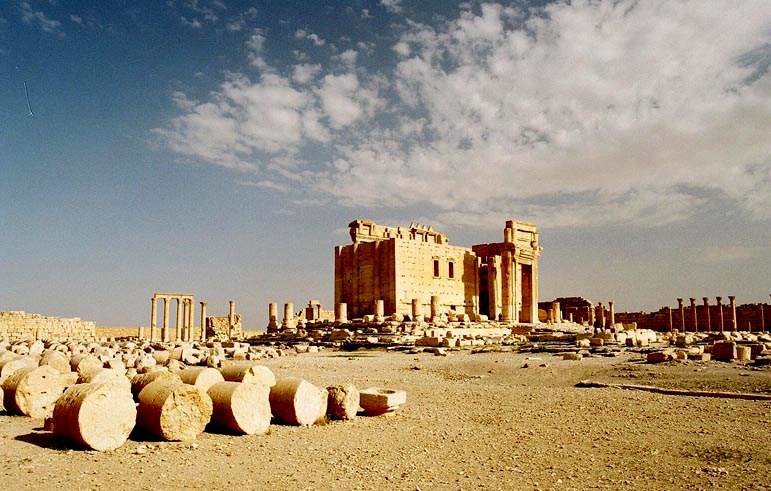Syria



Hours can be spent strolling in and around
the al-Hamidiyeh souq in the walled old city of Damascus, once among
the world's greatest and most powerful cities. The larger souq in
Aleppo is more ballyhooed but I preferred the more laid back and
vaguely cosmopolitan feel of the one in Damascus.
blabla
blabla.



Palmyra is simply one of the great Roman
ruins in the world, as the former crossroads of the eastern Roman
empire, and one of those places that's more awesome in person
than from the pictures of it. I spent a good six hours walking
around the expansive site, extending from the Temple of Bel (centre),
through the grand archway entrance to the colonnaded main street (top)
and deep into the mountain valley where the imperial tombs stand.
A Syrian family driving a Peugeot 404 visits one of the vantage points
overlooking the vestiges of downtown Palmyra near the Temple of Zeus
(bottom).

It seems that most backpackers prefer the
Salah al-Din castle in northern Syria near the port town of
Lattakia, to the more famous Krak des Chevaliers in central
Syria. Krak may be an amazingly preserved specimen of a Crusader
castle, but the more fragmented ruins of Salah al-Din perched high over
a sublimely beautiful mountain setting, evokes more poetic sighs.



Father Paolo stumbled upon the ruins of
the ancient catholic monastery of Mar Musa during a walk in the
desert 25 years ago and has since dedicated his life to restoring the
monastery to a fully functioning state, and toward bridging the
christian and muslim worlds in the middle east. Visitors are
invited not only to visit but to spend time living with the full time
residents of Mar Musa, and help out with daily chores in the monastery
and at their garden . Some travellers end up spending months in
Mar Musa. A half hour walk takes you up to the top of the hill,
from where the snow capped Anti-Lebanon mountain range to the west can
be seen panoramically. Inside the church, Father Paolo performs
the Levantine rituals of the weekly mass, swinging smoking
censers under the flickering candlelight which only barely
illuminates the 11th century frescoes that have been beautifully
restored on the church walls and ceiling (top and bottom).
blabla


After allaying police fears in this
sensitive northeastern Syria, fraught with kurdish-arab ethnic tensions
and its proximity to Iraq, I was invited to spend the night in the sufi
compound at the village of Tell Marouf by friendly Ahmed, and fed and
housed under the generosity of their spiritual leader, the Sheikh
Abdullah (top). I had to respectfully decline an invitation from
the Sheikh to join his entourage on a religious tour of Turkey.
Ahmed didn't succeed in obtaining a private audience with the Sheikh in
his palace for me (front lawn shown on bottom), but I did attend his
public audience after the evening prayers where the Sheikh asked if I
could obtain a Canadian visa for him. I was aware of criminal
intrigue in Tell Marouf before going there (hotel manager in Qamishli:
"They'll kill you!") but didn't know the full story until after I'd
departed. The former leader was Sheikh Muhammed, a brother of
Sheikh Abdullah, who was assassinated last year in Damascus. The
gunmen from the sect were captured , but details of the conspiracy
remain unclear. Most people in the region suspect fratricide or
the Syrian secret police.

Um Amoud, one of tne of the many beehive
house villages in the countryside near Aleppo and Hama.
To Lebanon page
BACK
to HOMEPAGE

























